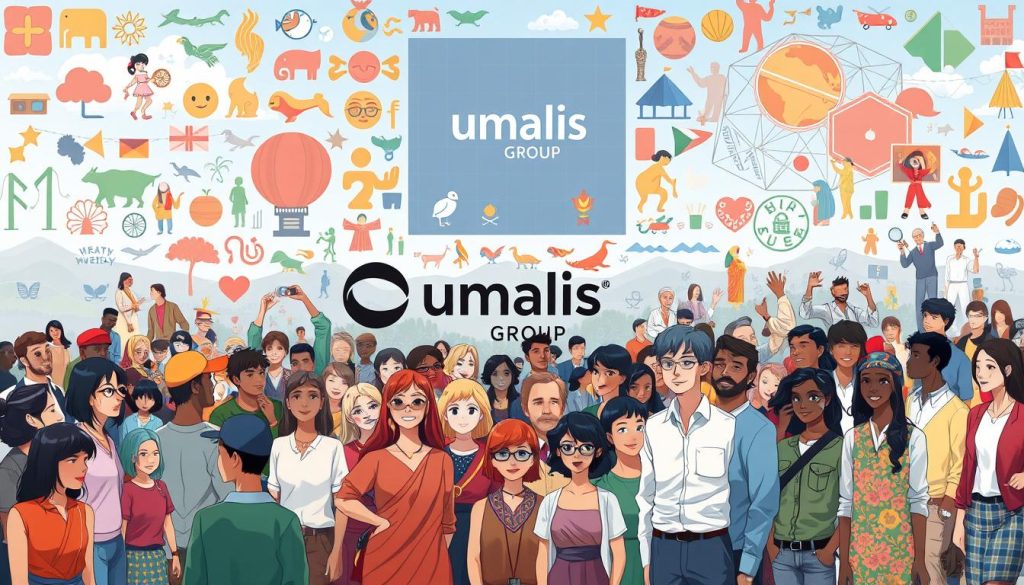76% of jobseekers say a company’s mix of backgrounds matters when they choose where to apply, and inclusive firms drive far more innovation.
As an independent professional in France, that statistic signals an opportunity. You can use a pragmatic approach to attract clients across sectors and stay resilient over time.
We define diversity and inclusion for a solo or micro-business so you can adapt fast to client expectations. This keeps your brand safe and delivers clear benefits to your practice.
This Ultimate Guide maps a simple path from awareness to action. You will find definitions, business benefits, playbooks, and lightweight tracking methods you can apply this week.
Embedding inclusive habits into delivery reduces delivery risks like miscommunication and rework. It also strengthens long-term relationships and referrals from people you serve.
Table of Contents
Key Takeaways
- Clients and procurement increasingly favor suppliers that show genuine inclusion.
- A right-sized strategy helps a one-person firm compete with larger teams.
- Start with quick wins: diverse clients, inclusive delivery, and on-demand partners.
- Lean policies and simple templates avoid heavy overhead while boosting optionality.
- Evidence-based steps, drawn from studies, keep decisions pragmatic and defendable.
Why Work Diversity Matters Now for Independent Professionals in France
Many French buyers expect contractors to show concrete inclusive practices before shortlisting.
Client procurement teams across France and the EU now factor inclusive criteria into vendor selection. LinkedIn reports most firms are tackling diverse hiring, and procurement panels use similar filters when evaluating suppliers.
That trend affects access to frameworks and preferred supplier lists. Large employers evaluate a contractor’s ability to collaborate with varied teams and to respect local and cross-border norms.
Practical benefits for independents:
- Higher chances in public sector and regulated industry bids when you document inclusive methods.
- Better stakeholder engagement as employees join projects with confidence, improving momentum and engagement.
- Fewer costly differences in interpretation across departments, leading to clearer requirements and on-time delivery.
Being conversant in workplace diversity terms and types diversity signals credibility during procurement and executive briefings. We recommend outlining your inclusive approach in proposals so evaluators see how you will engage varied user groups.
For practical templates and further guidance, consult our management of inclusion resource to adapt methods to French buyers.
Defining Workplace Diversity and Inclusion for a Solo or Micro-Business
A micro-business can show concrete inclusion through simple policies and predictable processes.
What we mean by diversity: the presence of people from varied backgrounds — race, gender, age, ability, religion and more. In a one-person practice this means engaging a diverse client base, supplier mix, and collaborator network so your services reflect the markets you serve.
Diversity vs. inclusion
Diversity answers who is involved. Inclusion describes how you operate so everyone can contribute. Equity complements both by matching support to different needs.
Practical steps for a solo professional
- State three simple policies in proposals: respectful communication, accessibility, and bias-aware evaluation.
- Use meeting norms—clear agendas, option to join remotely, and language choices—to help people participate.
- Create a short onboarding checklist to collect perspectives from employees, clients, and user groups, and set feedback loops.
Documenting these commitments builds brand trust and speeds proposal preparation. The goal is a safe environment and stronger relationships that lead to better outcomes.
The Different Types of Diversity You Should Recognize
Understanding the categories of identity and role helps you design clearer research and fairer delivery.

Internal, external, organizational and worldview
Map four practical categories to scan client contexts:
- Internal: race, gender, age, physical ability, ethnicity, cultural identity.
- External: education, socioeconomic status, parental status, religion, life experience.
- Organizational: role, level, department, union membership across the workforce.
- Worldview: beliefs and perspectives that shape choices and expectations.
Visible vs. invisible attributes and intersectionality
Some traits are visible; many are not. Disability, neurodiversity, faith or sexual orientation often require sensitive, consent-based questions.
Intersectionality means overlapping identities — for example, gender plus race plus class — that affect access and needs. Use structured, neutral questions to avoid assumptions.
Checklist for stakeholder mapping: include frontline to leadership, less vocal groups, language and immigration status, education level, and underrepresented backgrounds. This improves sampling for interviews and tests and helps you plan inclusive facilitation and materials.
The Business Case: Benefits That Boost Engagement, Innovation, and Revenue
Clear business benefits make inclusive practices a measurable investment for solo professionals. Evidence links inclusive approaches to concrete gains in ideas, adoption, and returns.
Innovation and ideas
Studies show mixed teams deliver more creative outcomes. BCG reports a 19% lift in innovation-related revenue for above-average teams.
Deloitte/Bersin finds inclusive firms are 1.7x likelier to lead on innovation, and MIT data ties mixed-sex teams to higher revenue. These findings justify time spent on inclusive design and structured collaboration.
Market reach and client wins
Serving multiple user segments expands market reach and improves proposals. Inclusive delivery boosts credibility with cross-functional groups and helps win contracts across departments.
Tap on-demand specialists to add fresh perspectives without fixed overhead. See our guide to diversifying your client base for practical steps.
Reputation, referrals, and retention
McKinsey links inclusion to higher employee engagement and retention. Clients reward partners who run respectful, evidence-based processes with referrals and repeat business.
- De-risking: better decisions, fewer reworks, clearer requirements.
- KPIs: win rate on inclusive proposals; stakeholder participation; satisfaction across segments.
- Price realization: inclusive delivery signals premium value and eases procurement concerns.
Work Diversity Strategies for Independent Professionals
« Simple, documented habits win trust in proposals and delivery. »
Independent consultants can reduce risk and win more briefs by embedding practical inclusion steps into everyday practice.
Diversify your portfolio
Spread revenue across sectors, offer retainers, and add short and long projects. Target clients who serve different groups to stabilise income.
Inclusive delivery
Provide captioning, translated summaries, contrast-friendly materials, and alt text. Use culturally aware language and simple agendas to help employees and clients engage.
Build teams on demand
Assemble co-freelancers, fractional managers, and niche talent from vetted networks. Use structured briefs and portfolio-first selection to reduce bias.
Policies that scale
- Publish a short DEI statement, an inclusive facilitation charter, and an accessibility checklist.
- Brief managers and client leads on inclusion goals and psychological safety.
- Onboard collaborators with expectations on conduct, privacy, and escalation paths.
Quarterly reviews, post-mortems, and simple feedback channels keep the practice improving over time.
Turning a Diverse Workplace into Better Work: Practical Tactics
When you pair simple rules with structured tools, meetings and hiring run smoother. These tactics help you reduce bias, speed decisions, and create a fairer work environment for clients and collaborators.

Bias-aware hiring for gigs
Start with outcomes: write role goals, not biographies. Use blind screeners that remove names and photos. Score portfolios against clear criteria so applicants are judged on results.
Set policies for shortlists: require selection notes, keep a diverse pool, and save rationale to improve repeatability and defend decisions.
Inclusive meetings and facilitation
Rotate time zones, share pre-reads, and allow camera-optional participation. Offer live captions and record sessions with consent for asynchronous review.
- Use round-robins, silent brainstorming, 1-2-4-All, and anonymous input tools to surface quieter voices.
- Adopt a RACI or decision-owner model to avoid slower decisions while ensuring key perspectives are heard.
- Coach managers and session leads to notice micro-interruptions, restate ideas, and invite counterpoints.
Finally, build short feedback loops: pulse checks after sessions, a simple survey on inclusion, and an improvement backlog. Standardize briefs, agendas, and notes so every meeting prompts for input from all people and teams.
« Simple rules and structured tools make inclusive practice repeatable and defensible. »
Overcoming Common Challenges in Diversity and Inclusion
Small firms often face predictable barriers when they try to make inclusion practical and measurable. These challenges span communication, decision speed, prioritization, costs, and resistance from people and partners.
Communication barriers and slower decisions: frameworks for clarity
Provide a clarity framework: define goals, roles, and deadlines up front to reduce confusion across language and culture in the workplace.
Meeting norms: set agendas, pre-reads, and a single decision lead per topic to keep momentum while gathering inclusive input.
Prioritization and resistance to change: setting expectations and accountability
Create a transparent backlog that sequences initiatives across inclusion areas so people see priorities and trade-offs.
- Coach on resistance: explain rationale, invite questions, and show quick wins to build trust.
- Zero-tolerance standards: ask employers and companies you serve to adopt clear anti-harassment rules and shared consequences.
- Cost-savvy options: use built-in accessibility tools and free inclusive-language guides before buying specialised systems.
- Capacity planning: time-box inclusion tasks, use checklists, and document escalation paths for discrimination incidents.
- Recovery playbook: acknowledge harm, repair with action, and adapt processes to prevent repeat issues.
« Clear rules, single decision owners, and visible accountability keep progress steady and protect people. »
Measuring Progress: Simple DEI Metrics for Solo and Small Teams
Tracking a small set of metrics turns inclusion intentions into repeatable practice.
Pipeline, participation, and outcomes: what to track over time
Keep the approach lean. Focus on metrics that show who you attract, who speaks up, and whether decisions improved.
- Define a compact scorecard: pipeline representation, participation rates in workshops, and outcome quality tied to decision robustness and employee engagement.
- Track representation by department, role, and level in client-facing activities to ensure balanced input across the workforce.
- Use short post-session surveys to measure sentiment: did employees feel heard, understood, and enabled to contribute?
- Monitor your collaborator network for a healthy mix of talent by skill, geography, and ethical demographic proxies.
- Capture accessibility stats: percentage of sessions with captions, accessible files delivered, and requests fulfilled in the workplace.
Use a lightweight per-project scorecard to summarise results and lessons. Compare engagement and outcomes over time to find what reduces rework and improves client adoption.
« Measure simply, act fast, and feed changes into templates and retrospectives. »
Share anonymized results with clients and calibrate goals to the size and context of each engagement. This builds trust with companies and strengthens long-term relationships while keeping metrics actionable.
Conclusion
Close with a strong, practical step: pair clear policies and measurable actions so your solo practice becomes a strategic ally for clients.
Evidence supports this: BCG links mixed teams to a 19% lift in innovation revenue, Deloitte/Bersin finds 1.7x innovation gains, Glassdoor shows 76% of jobseekers value inclusion, McKinsey ties diversity to profitability, and the ILO estimates 3–7% GDP gains if disability employment matches non‑disabled levels.
Keep a living toolkit—policies, templates, facilitation guides—and track simple metrics so employees feel safe and the work environment improves.
Prioritize gender, race, sexual orientation, women’s advancement, and varied backgrounds while respecting consent. Set one next-level goal, ask managers to sustain norms across times and zones, and share evidence with companies to make your approach a competitive asset.
By applying this guide, you align to procurement expectations, elevate delivery quality, and position your brand as a trusted Sage and Protector for clients and communities.
FAQ
What does "enhance work diversity" mean for independent professionals?
It means deliberately expanding the range of people, perspectives, and clients you engage with—across gender, race, age, sexual orientation, and professional background—to increase creativity, reduce blind spots, and open new revenue and referral opportunities.
Why does diversity matter now for independent professionals in France?
Clients and partners expect inclusive approaches. Adapting to varied cultural norms and language needs strengthens your reputation, helps you win contracts across industries, and improves client satisfaction and retention.
How do I distinguish between diversity and inclusion as a solo or micro-business?
Diversity is the presence of different people and characteristics; inclusion is the set of actions and culture that make those people feel they belong and can contribute. Both are required to benefit from varied perspectives.
How can I apply concepts like "diverse workforce" to my freelance practice or micro-enterprise?
Translate the idea by diversifying collaborators, suppliers, and client segments. Seek partners from varied backgrounds and tailor services to different industries, departments, and audience needs.
What types of diversity should I recognize when shaping my offer?
Consider internal factors (skills, experience), external factors (clients, markets), organizational aspects (processes, policies), and worldview differences (cultural norms, beliefs). Visible and invisible traits both affect collaboration and outcomes.
How does intersectionality change how I approach clients and teams?
Intersectionality acknowledges that people hold multiple identities at once. Use it to avoid one-size-fits-all solutions and to design services, communication, and accessibility that respect combined needs.
What tangible business benefits can diverse and inclusive practices bring?
Benefits include enhanced innovation and problem-solving, broader market reach, stronger client wins, better referrals, higher employee or collaborator engagement, and ultimately improved revenue and resilience.
How can I diversify my portfolio effectively?
Target varied sectors and project types, balance short and long-term contracts, pursue clients across different departments and industries, and create multiple revenue streams to reduce risk.
What does inclusive delivery look like for independent professionals?
It involves accessible communication, multilingual or culturally aware materials, and formats that consider disabilities, time zones, and diverse working styles to ensure equitable participation.
How do I build diverse teams on demand without hiring staff?
Maintain a trusted network of freelancers, consultants, and managers from varied backgrounds. Use clear briefs, structured selection criteria, and partnerships with platforms or agencies to scale talent quickly.
Which simple DEI policies are useful for proposals, onboarding, and feedback?
Use concise statements on inclusivity in pitches, standardized onboarding checklists that note accessibility and communication preferences, and regular feedback loops that invite diverse perspectives.
What are practical tactics to reduce bias when hiring for gigs?
Use structured briefs, blind screening where possible, clear evaluation criteria, and diverse interviewers. These steps lower groupthink and improve selection fairness.
How can I run inclusive meetings and workshops as an independent professional?
Schedule with time-zone awareness, offer multiple participation formats (video, chat, async), set facilitation norms, and provide materials in advance to accommodate different needs.
What common challenges arise when promoting inclusion, and how do I address them?
Expect communication barriers, slower decision cycles, and resistance to change. Counter them with clear frameworks, defined accountability, and incremental priorities tied to measurable outcomes.
Which simple DEI metrics should I track as a solo or small team?
Monitor pipeline diversity (lead sources and client types), participation (meeting and collaboration diversity), and outcomes (client satisfaction, retention, referral rates) to gauge progress over time.
How can I communicate my commitment to inclusion to potential clients?
Share concrete examples: inclusive project designs, accessibility measures, diverse collaborator lists, and case studies that demonstrate client impact and improved engagement.
Are there legal or ethical considerations in France I should know about?
Yes. Respect anti-discrimination laws and data privacy rules. Ensure recruitment and client selection follow legal guidelines and professional ethics to protect reputation and reduce risk.
How do I balance commercial goals with inclusive practices?
Align inclusion objectives with business KPIs: target diverse markets for growth, measure client satisfaction, and tie collaboration diversity to innovation outcomes to ensure both purpose and profit.





